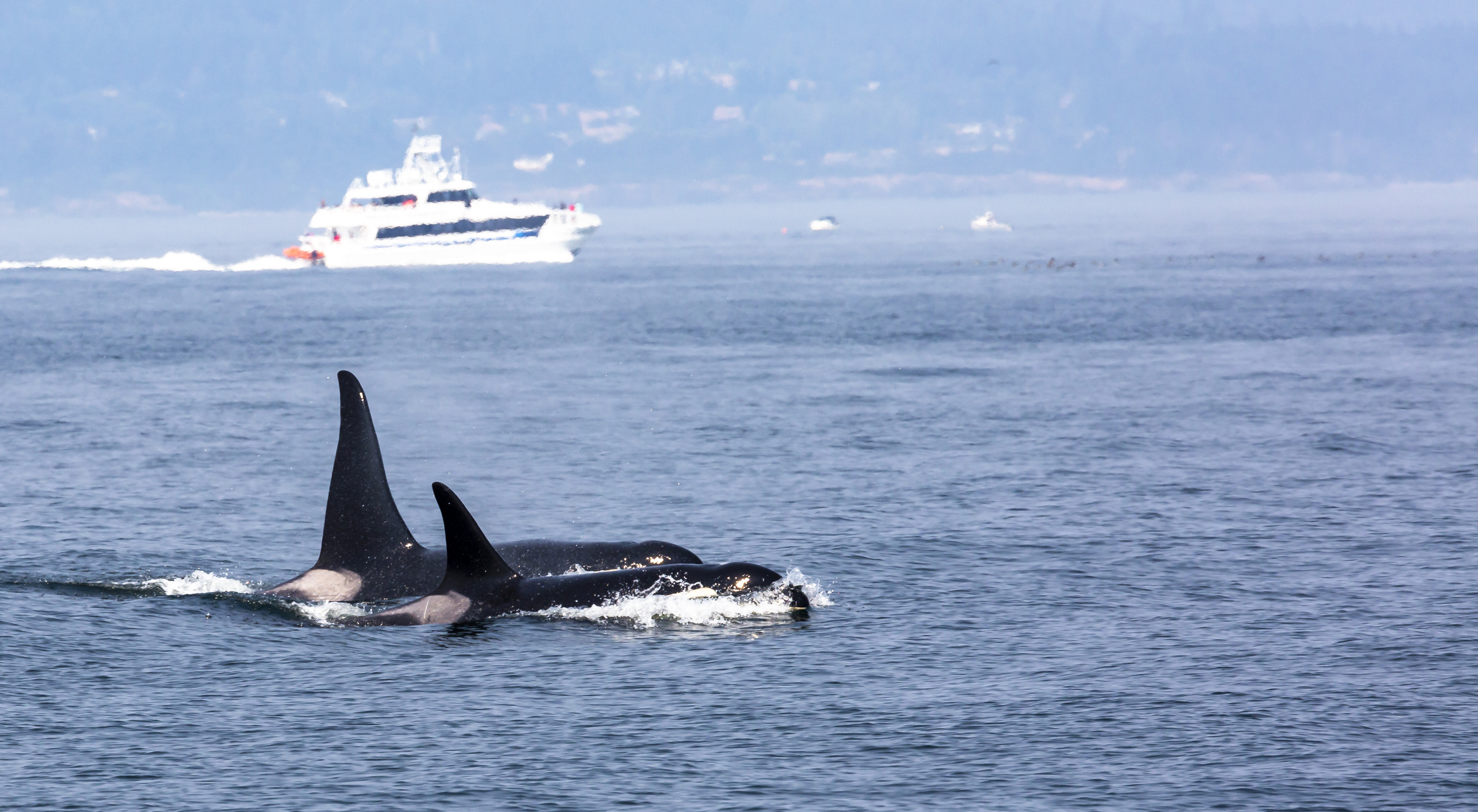On the night of May 4, the Swiss yacht Alboran Champagne was sailing through the Strait of Gibraltar when a trio of orcas, two small and one large, began to attack. The smaller two shook the rudder at the back while the largest rammed the ship from the side, reported Yacht, a German boating news site. After an hour and a half, the whales had created two holes and water began pooling in the rear of the boat, rising slowly. A rescue cruiser came to collect the four people on board and tow the Alboran Champagne 11 miles back to port, but the battered yacht sank just before it reached the harbor.
As the wreck of the Alboran Champagne retreated under the waves, it became the third boat sunk by a group of orcas off the Iberian coast. These orcas have been recorded interacting with boats since 2020, striking rudders and sometimes damaging the vessels, according to a paper tracking this behavior published in the journal Marine Mammal Science. But these attacks have escalated in the last year, placing the orca population in the sightlines of the terminally online, many of whom have declared the whales comrades in the entangled fights against capitalism and climate change and called for the orcas to sink Jeff Bezos's grotesquely bosomed $500 million superyacht. In a year of protests and strikes, it seemed orcas had joined the uprising. Has the animal revolution begun?
A little late to this story but JOIN THE ORCA UPRISING. pic.twitter.com/aGffzdm3Ee
— Earth Liberation Studio (@EarthStvdio) May 24, 2023
The most sensational headlines declared the whales were seeking "revenge," led by a "vengeful" adult female named White Gladis (these provocative headlines almost always opt to use the name killer whales rather than orcas). More responsible headlines cast White Gladis in a more empathetic light as a "traumatized female orca," citing a LiveScience story that suggests the whale experienced a "critical moment of agony," such as a boat collision or entanglement with fishing line. But all of these stories still ascribe a recognizably human intent to the whales' behavior: A boat did something bad to a whale, and now she and her community are acting out.
To be clear, this is all speculation. There is a female whale named White Gladis, or Gladis Blanca, who has been present at many of the attacks. White Gladis can be identified by the scars striping her body, which may have been caused by fishing lines or contact with boats. (To show the extent of the damage, the researchers published a diagram of White Gladis's scars.) But the researchers studying the boat-sinking orca are much more cautious about identifying a leader or ascribing intent. "We are still not sure that this was the case of this animal initiating the behavior, and I am afraid we will never know as there is no evidence of the first interaction," Ruth Esteban, a researcher and an author on the first paper describing these attacks, wrote in an email.
Why are the orcas doing this? As Luke Rendell, a biologist at the University of St. Andrews in Scotland, wrote in a piece for The Conversation, "we just don’t know enough about killer whale motivations to be certain." Orcas are highly intelligent animals with distinct cultures and dialects, but their internal states—how they think, make decisions, and what they value—remains beyond our reach.
Although the boat-sinking fad is certainly new, orcas have always been interested in boats. Pliny the Elder wrote about orcas in the Iberian Peninsula swimming alongside tuna trap nets. Modern orca populations in the Strait of Gibraltar cruise for tuna snagged on fishing lines to eat the fish before fishers can drag it to the surface (behavior like this can lead to the injuries observed in White Gladis, such as deep lacerations and even amputations). Sometimes, the animals are simply interested in the boat and its propellers as an object of curiosity, Rendell writes.
A better question, or at least one that scientists may be able to answer, is how the behavior developed and spread among members of the pod. Rendell notes the boat-sinking behavior resembles other orca fads, or behavior developed and spread through social learning that does not obviously increase their ability to survive in their environment. The most famous example of this occurred in the summer of 1987 in the southern resident population of orcas in Puget Sound, when female orca was spotted carrying a dead salmon on her head like a hat. Over the next five to six weeks, the behavior spread, and orcas from two other pods in the area were seen with salmon fascinators of their own. The salmon hats lingered into the following summer and then never again; the orcas were over it.
In a time of so much human rage against the overlapping crises of climate and capitalism, it seems existentially correct, and vicariously thrilling, that the orcas have graduated from salmon hats to sinking yachts. Sinking a yacht named after champagne is almost too on the nose. It's unclear, of course, if the orcas perceive humans as an aggressor or have a notion of solidarity, Rendell writes. It's certainly not impossible. But perhaps intent is not always necessary for solidarity. And who ever said the revolution had to be human?
Ron Broglio, an English professor at Arizona State University, begins his book Animal Revolution with a call to creatures everywhere: "Animals of the world unite. You have nothing to lose but your chains." Acknowledging the many ways animals strike, protest, or disrupt systems of human domination, Broglio examines what revolution can look like from the perspective of the non-human animal. He writes about cows escaping a packing plant in Omaha, radioactive boars from Chernobyl tearing down fences in German towns, and swarms of jellyfish shutting down warships. Some would dismiss these events as accidental and unrelated, but Broglio takes the pattern seriously to ask a larger question. "What if they are showing us a space outside of our world and pointing us to other ways of being on the planet?"
I asked Broglio if he'd heard of the yacht-sinking orcas. He acknowledged scientists do not have a clear answer to why the orcas are sinking the boats, and that all the speculation around potential reasons has excited the general public. It's this human curiosity, he said, that gives him hope. "Finally we might ask what animals want, and the public becomes curious about these nonhuman minds in the water," he wrote in an email. "Thinking about animals thinking is an important step toward empathy beyond ourselves."
However thrilling it would be to see Jeff Bezos's megayacht dragged down to the seafloor by a pod of killer whales named Gladis, it seems unlikely that orcas could sink such a monstrosity. We also cannot outsource our activism to whales. And the longer the orcas ram into ships, the greater risk they run of retaliation from humans—everyone remembers what happened to Freya. The Iberian orca subpopulation is considered critically endangered, the last complete census in 2011 recording just 39 individuals, and the waters of the Strait of Gibraltar see heavy boat traffic. If the orcas could draft a list of demands, it might include quieter, emptier seas, which, it bears mentioning, belonged to the orcas long before we invented yachts. "Do we have the patience to give another species time and space? I hope so," Broglio said.







